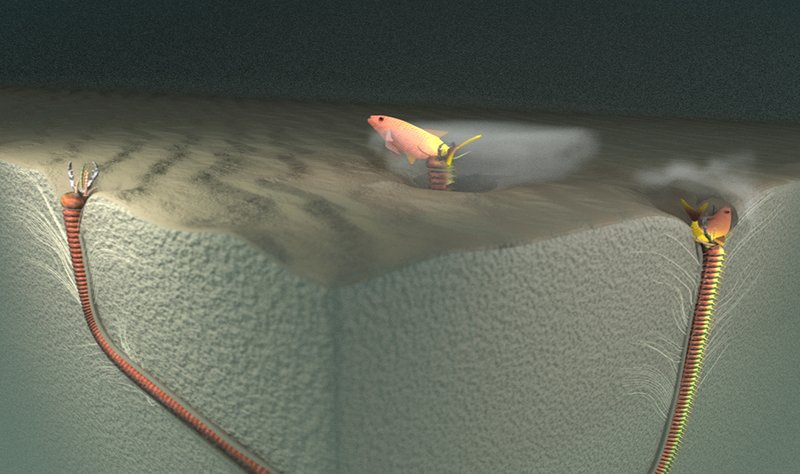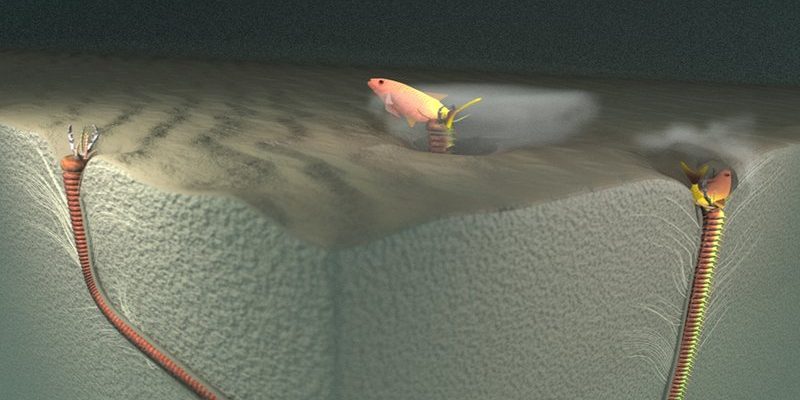
Marine hobbyists have had quite the mix of reactions to stories about Bobbit worms. Whether it’s fascination, fear, or a sense of adventure, these reactions provide a glimpse into the experiences of those who keep saltwater tanks or explore the ocean. From horror stories of surprise encounters to excitement over their unique biology, the Bobbit worm has captured the attention—and imagination—of many. So, let’s explore how different hobbyists feel about these unexpected marine inhabitants and why it all matters in the grand scheme of things.
What Exactly Is a Bobbit Worm?
Bobbit worms belong to the *Eunice* genus and are often found in tropical and subtropical waters. This creature gets its name from a rather infamous incident involving a certain John Bobbitt, thanks to its sharp, scissor-like jaws. As a marine enthusiast or just a curious person, you might find it hard to believe that something so vibrant and colorful can also be a skilled predator.
These worms can reach impressive lengths, sometimes over ten feet, and have a knack for camouflaging themselves among the sand and rocks. Imagine a magician pulling a never-ending scarf from their pocket—that’s kind of like how these worms can surprise you with their size! The way they hide and ambush their prey makes them master hunters. They extend their brightly colored, feathery appendages to lure fish and crustaceans close before striking with lightning speed.
But why should you care about Bobbit worms? For hobbyists, understanding these creatures helps us appreciate the delicate balance within marine ecosystems. They’re not just amazing creatures; they also play a role in the food chain, keeping populations of smaller fish in check. If you’re setting up or maintaining a marine tank, learning about Bobbit worms can help you create a more balanced environment.
Why Are Hobbyists Talking About Them?
You might wonder why Bobbit worms have become such a hot topic among marine hobbyists. The truth is, they’re not just fascinating because of their appearance or hunting style; they also come with a bit of drama. For many, the stories shared about accidental encounters can be downright terrifying. Imagine reaching into your tank to rearrange some coral, only to find this sly creature lurking below.
Many hobbyists recount experiences of discovering a Bobbit worm after realizing that some of their fish are mysteriously disappearing. The tales often start with confusion and develop into full-blown panic as they try to identify the culprit of the missing fish. This is where the Bobbit worm’s reputation for being a stealthy predator comes into play, causing many to rethink their tank setups and preventative measures.
On social media platforms and hobbyist forums, the buzz around Bobbit worms ranges from horror stories to enthusiastic discussions about their intriguing biology. You might find threads filled with artwork inspired by these creatures, or videos showcasing their unique behavior. It’s a testament to how the aquatic world can spark creativity and conversation among enthusiasts!
Mix of Fear and Fascination
Honestly, the reactions to Bobbit worms are often polarized. On one hand, you have those who are understandably freaked out by the thought of a giant worm hiding in their tank, waiting for a chance to strike. On the other hand, many hobbyists are fascinated by these “monsters of the deep,” admiring their vibrant colors and impressive adaptations.
For some, the fear lies in worrying about what could happen to their more delicate tank inhabitants. The thought of a Bobbit worm ambushing their prize fish is enough to keep anyone on guard. However, for others, the intrigue outweighs the fear. They see Bobbit worms as a striking representation of ocean biodiversity. To them, having one in their tank—assuming it’s properly contained—adds excitement to their hobby.
This duality fuels conversations within the community, as hobbyists share tips on how to manage or even control these creatures if they’re discovered in a tank. They talk about creating barriers or using trap methods, showcasing the lengths some will go to nurture their aquatic environments while still appreciating the wild side of nature.
Bobbit Worms in the Aquarium Trade
It’s important to note that Bobbit worms don’t typically come as part of the average aquarium setup. Many hobbyists first learn about them through stories or when they accidentally discover one in their tank. It raises questions about what to do if you want to keep such a creature or how to prevent them from making an unwanted appearance.
Some specialty fish shops may offer Bobbit worms, but it’s essential to consider carefully if this is something you want in your aquarium. They might add a unique element to the ecosystem, but they can also disrupt it. It’s like adding a wild card to a poker game—there’s potential for both exciting twists or total chaos.
If you’re looking to integrate a Bobbit worm into your aquarium, make sure you have the knowledge and equipment to handle it responsibly. Research their specific needs, such as habitat, feeding, and potential interactions with other marine life. This kind of preparation can help you enjoy the thrill of ownership while keeping your tank balanced and healthy.
How to Share Your Own Stories
If you’ve had your own run-ins with Bobbit worms or just want to chat about these odd creatures, there are plenty of platforms to share your experiences. Social media groups dedicated to marine hobbyists are bustling with discussions and anecdotes. Share your story, and you might just find others who’ve had similar encounters!
You might also consider starting a blog or even a YouTube channel. Sharing your adventures in marine keeping, including the ups and downs, can resonate with others who find joy in the ocean’s wonders. Plus, you never know who you might inspire or what you might learn from the reactions and input of fellow enthusiasts.
When you post, think about how your story can help others. If you’ve learned a lesson the hard way, sharing that insight can save someone else a lot of trouble. And who knows? Your experience might spark a lively conversation, filled with tips, tricks, and even a few laughs.
The Bigger Picture of Marine Conservation
Ultimately, the discussions surrounding Bobbit worms tie back to a larger theme: marine conservation. Each creature in the ocean plays a role, whether it’s a charming clownfish or a menacing Bobbit worm. Understanding and respecting these creatures is vital as we work to preserve their habitats and ecosystems.
Conversations sparked by these fascinating creatures might inspire hobbyists to think more critically about their marine practices. By learning about these unique animals, hobbyists can promote healthier tank environments and better overall ocean health.
You might find that exploring the worlds of creatures like Bobbit worms leads to a deeper appreciation for the ocean and its diverse ecosystems. Perhaps it will motivate you to get involved in conservation efforts or simply spread awareness about the importance of keeping our oceans healthy for generations to come.
In summary, whether you find yourself horrified or captivated by Bobbit worms, these stories are a reflection of the vibrant community of marine hobbyists. By sharing our experiences and learning from each other, we can celebrate the wondrous and sometimes bizarre world beneath the waves.

